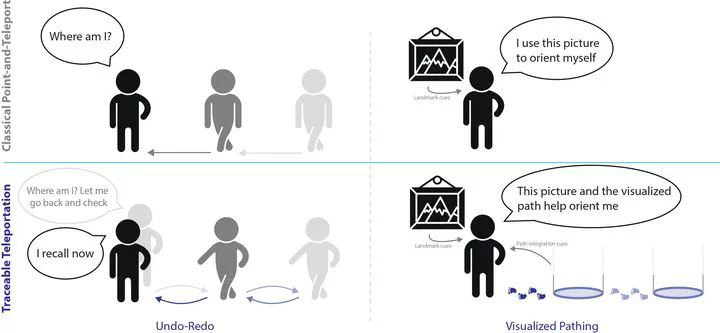Traceable teleportation: Improving spatial learning in virtual locomotion
Nov 2, 2024·,,,,,,,·
1 min read
Ye Jia
Zackary P. T. Sin
Chen Li
Peter H. F. Ng
Xiao Huang
George Baciu
Jiannong Cao
Qing Li

Abstract
In virtual reality, point-and-teleport (P&T) is a locomotion technique that is popular for its user-friendliness, lowering workload and mitigating cybersickness. However, most P&T schemes use instantaneous transitions, which has been known to hinder spatial learning. While replacing instantaneous transitions with animated interpolations can address this issue, they may inadvertently induce cybersickness. To counter these deficiencies, we propose Traceable Teleportation (TTP), an enhanced locomotion technique grounded in a theoretical framework that was designed to improve spatial learning. TTP incorporates two novel features: an Undo-Redo mechanism that facilitates rapid back-and-forth movements, and a Visualized Path that offers additional visual cues. We have conducted a user study via a set of spatial learning tests within a virtual labyrinth to assess the effect of these enhancements on the P&T technique. Our findings indicate that the TTP Undo-Redo design generally facilitates the learning of orientational spatial knowledge without incurring additional cybersickness or diminishing sense of presence.
Type
Publication
International Journal of Human-Computer Studies
- Submitted, 02 Jan 2024
- Revision 1, 18 Apr 2024
- Revision 2, 23 Sep 2024
- Accepted, 22 Oct 2024
Comments